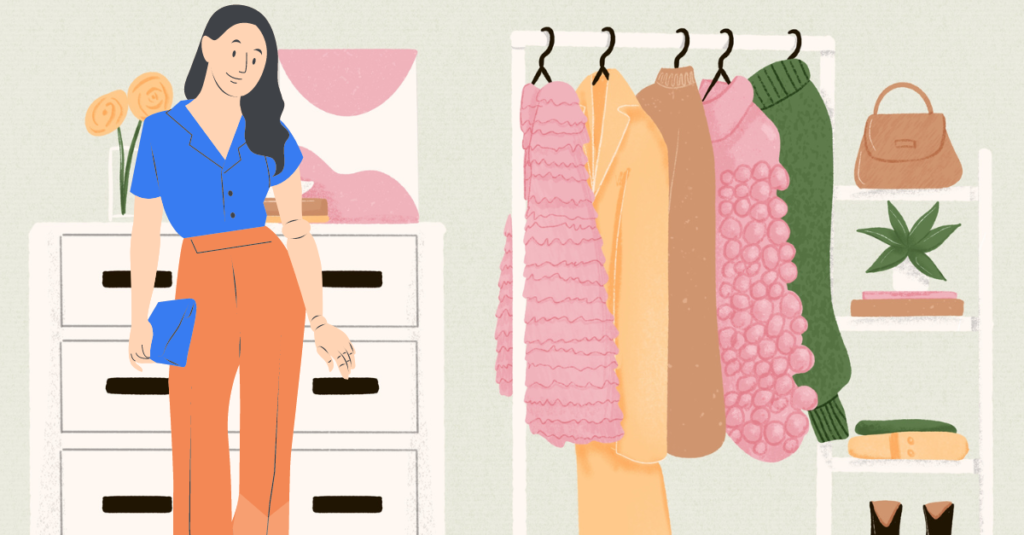Why Do Women Have More Clothes Than Men?
Introduction
In the world of fashion, one noticeable trend persists: women often seem to have an overwhelming abundance of clothes compared to men. While this observation may spark curiosity and speculation, the reasons behind this apparent wardrobe disparity are multifaceted and rooted in a variety of historical, cultural, and societal factors. In this article, we will delve into the intricacies of this phenomenon to gain a better understanding of why women tend to possess more clothing than men.
Why Do Women Have More Clothes Than Men?
1. Historical and Cultural Perspectives
To comprehend the divergence in clothing quantities, we must consider the historical evolution of gender roles and fashion. Traditionally, societal expectations dictated distinct roles for men and women, extending to their clothing choices. Throughout history, men’s clothing tended to be more practical and uniform, reflecting their roles as providers and protectors, whereas women’s clothing often encompassed a wider range of styles, reflecting their roles as nurturers and caretakers. These historical norms laid the foundation for the differing perceptions of fashion and clothing between genders.
2. Influence of the Fashion Industry and Marketing
The fashion industry plays a pivotal role in shaping clothing consumption patterns. Fashion trends emerge, evolve, and fade rapidly, encouraging frequent wardrobe updates. Marketing strategies also contribute to the divide, as the industry often targets women with a vast array of clothing options. Women’s fashion is often promoted as a means of self-expression, empowerment, and confidence-building, fostering a consumer culture that encourages frequent clothing purchases.
3. Self-Expression and Identity
Clothing has always been a powerful tool for self-expression and identity, and women have embraced this aspect of fashion wholeheartedly. Fashion allows women to communicate their personality, values, and tastes through an array of clothing styles, colors, and accessories. In contrast, societal expectations and traditional gender norms have sometimes limited men’s fashion choices, making it less expressive and diverse.
4. Workplace and Social Expectations
In professional settings, clothing expectations for men and women can differ significantly. Women may face greater pressure to adhere to various dress codes, ranging from business formal to business casual and even business chic. As a result, women often need a more extensive range of clothing to navigate these expectations seamlessly. On the other hand, the expectations for men’s workplace attire are often more standardized, reducing the need for a diverse wardrobe.
5. Clothing and Emotional Well-being
The connection between clothing and emotional well-being is undeniable. Studies have shown that what we wear can impact our mood, confidence, and overall outlook on life. For women, fashion can be a form of empowerment, allowing them to feel confident and in control. As women encounter more societal pressure to look a certain way, clothing choices may become a crucial aspect of their emotional well-being, leading to a desire for a larger variety of clothes.
6. Wardrobe Versatility and Fashion Trends
Fashion trends change at a dizzying pace, influencing clothing consumption patterns. Women are more likely to explore and experiment with diverse trends, creating a wardrobe that reflects the latest styles. Additionally, women’s clothing often offers more mix-and-match options, allowing for greater versatility in outfit combinations.
7. Cultural and Familial Influences
From a young age, cultural and familial influences can shape individual attitudes towards clothing. Girls may be encouraged to embrace fashion and develop their personal style, while boys may be steered toward more practical clothing choices. These early influences can have a lasting impact on clothing habits and preferences throughout adulthood.
8. Evolution of Fashion and Societal Changes
As fashion has evolved, so have societal attitudes toward clothing and gender norms. Over time, there has been a gradual shift toward breaking free from traditional gender expectations. Women have increasingly embraced androgynous and gender-neutral fashion, broadening their clothing choices. This evolution may contribute to the perception of women owning more clothes as they explore a wider spectrum of styles.
Conclusion
The disparity in clothing quantities between men and women is a complex interplay of historical, cultural, and societal factors. From the influence of the fashion industry and marketing to self-expression, workplace expectations, and emotional well-being, a multitude of reasons contribute to this phenomenon. As fashion continues to evolve, so too will our understanding of the dynamics behind women’s extensive clothing collections. Ultimately, the most important aspect of clothing remains personal choice and the freedom to express oneself through fashion, regardless of gender.

My name is Rohit Vagh and I’m a content writer specializing in fashion and lifestyle. I have three years of experience in this field and have written various articles. My writing style is creative and engaging, and I strive to create content that resonates with my readers. I have a deep passion for fashion and am constantly researching the latest trends and styles to make sure my readers are up to date. I’m excited to continue my career in blogging, and I’m always looking for new opportunities in the fashion and lifestyle space.





